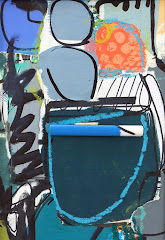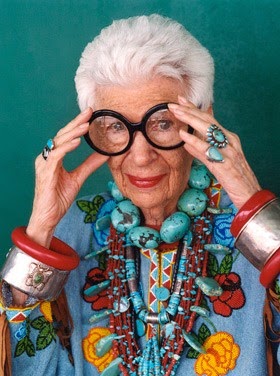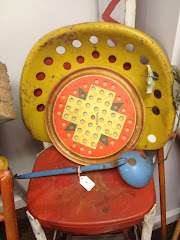 One of the best ways to create the feeling of a vintage kitchen is to use original shelving paper, trim, wallpaper and textiles in the colors, patterns and themes which prevailed during different eras. During the Colorful eras of the 40s and , 50s kitchen accessories were bold and often whimsical. It was common to see curtains, tablecloths, appliance covers, oil cloth and shelving paper with images of fruit, flowers, kitchen wares, teapots, Mexicana, roosters, poodles, Scotties, dots, stripes and plaids.
One of the best ways to create the feeling of a vintage kitchen is to use original shelving paper, trim, wallpaper and textiles in the colors, patterns and themes which prevailed during different eras. During the Colorful eras of the 40s and , 50s kitchen accessories were bold and often whimsical. It was common to see curtains, tablecloths, appliance covers, oil cloth and shelving paper with images of fruit, flowers, kitchen wares, teapots, Mexicana, roosters, poodles, Scotties, dots, stripes and plaids.Finding Vintage Shelving Paper in the Original Box
Today you can still find original packages of shelf paper and borders although you may pay a premium price for these adorable treasures of the past ($12.00-18.00 or more). Back in the day, homemakers would cover kitchen shelves with this shelf lining paper which would be folded down to show a decorative border; or, a separate scalloped trim could be applied to the shelf edge with thumbtacks. The Royal Lace Paper Works Company in Brooklyn, New York, marketed these products under the name Royledge.
Using Vintage Tablecloth Cutters as Shelf Liners
 Even if you are lucky to find original boxes of trim or sheets of shelving paper, you generally never find enough of a pattern to cover the needs of today's larger kitchens. What you might consider doing to create the look of a retro kitchen is to use material from older tablecloths or dish towels. Damaged tablecloths are called "cutters" and as the name implies these dry goods can be used to cut apart and use as edging or shelf coverings.
Even if you are lucky to find original boxes of trim or sheets of shelving paper, you generally never find enough of a pattern to cover the needs of today's larger kitchens. What you might consider doing to create the look of a retro kitchen is to use material from older tablecloths or dish towels. Damaged tablecloths are called "cutters" and as the name implies these dry goods can be used to cut apart and use as edging or shelf coverings.
Being True to Your Era
Vintage kitchen housewares and cooking accessories such as batter bowls, pitchers, decorative plates, juice glasses, Pyrex etc. look so much sweeter when they are sitting atop a shelf which is covered with a charming remnant in colors and themes consistent of the time period you are after. In the 1940s, you would generally find surfaces, furnishings and kitchen-wares in reds, yellows, blues and greens. The fifties brought pastel colors into the kitchens and textiles, tables and housewares were made in aqua, pinks and soft yellows.
How To Fasten Down Vintage Shelf Paper
If your shelves are wood, it is easy to fasten down fabric or remnants of tablecloths and dish towels with thumb tacks or even a staple gun. It's always nice to position the fabric so that the whimsical designs are showing. For example, fold an older tablecloth remnant in such a way as to allow an edge of strawberries, or flowers or whatever to drape over the edge of the shelf just a bit. Often you need to experiment with your choice of materials. Choosing colors and patterns which are complimentary to the objects you want to place on the shelf will help with the overall appearance.
The Role of Color in Arranging Objects
When you have predominately blue objects or collectibles to sit on a shelf, try using a piece of a vintage tablecloth or fabric which is mostly yellow or red perhaps. Patterned cloths are fine as long as they are not too busy to showcase your collectibles or objects. Using blue with blue may result in a boring presentation. On the other hand if your objects are dark blue, a predominately light blue tablecloth or fabric remnant might just work.
C. Dianne Zweig is the author of Hot Kitchen & Home Collectibles of the 30s, 40s, 50s and Hot Cottage Collectibles for Vintage Style Homes. She is also the Editor of Iantiqueonline.com an actively growing internet based resource community for people who buy, sell or collect antiques, collectibles and art. You can find Dianne’s fabulous retro and vintage kitchen, home and cottage collectibles at The Collinsville Antiques Company of New Hartford, CT, a 22,000 feet antique emporium with an in-house retro café.
To read more articles by C. Dianne Zweig click on this link:
C. Dianne Zweig’s Blog Kitsch ‘n Stuff
Email me at dianne@cdiannezweig.com
Visit my website, CDianneZweig.com
Dianne is a member of:
The American Society of Journalists and Authors
The Authors Guild, Inc.














I liked it, you can find more kitchen tables from spacify.
ReplyDelete